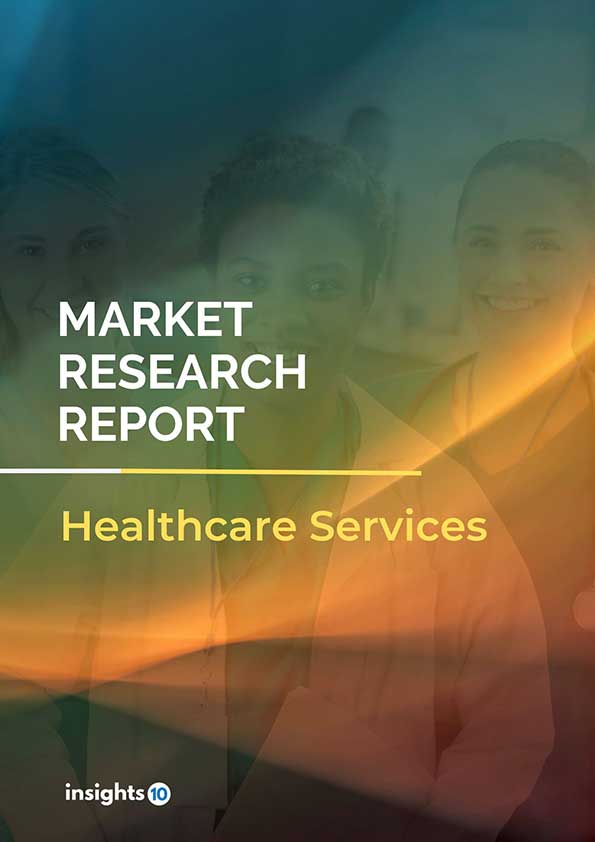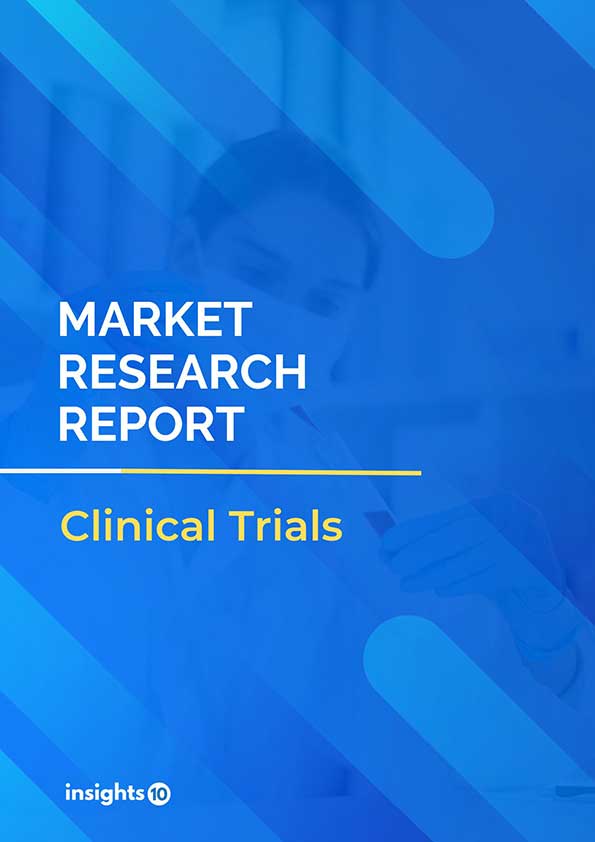Denmark Home Healthcare Market Analysis
The Denmark home healthcare market was valued at $XX Bn in 2022 and is estimated to expand at a compound annual growth rate (CAGR) of XX% from 2022 to 2030 and will reach $XX Bn in 2030. One of the main reasons propelling the growth of this market is the introduction of newer technologies, and the aging population. The market is segmented by component and product. Some key players in this market are Always Support ApS, Coloplast, Novo Nordisk, B. Braun Melsungen AG
Buy Now

Denmark Home Healthcare Market Executive Summary
The Denmark home healthcare market was valued at $XX Bn in 2022 and is estimated to expand at a compound annual growth rate (CAGR) of XX% from 2022 to 2030 and will reach $XX Bn in 2030. Denmark has a population of approximately 5.8 million people dispersed across 43,094 km2. The Danish healthcare system is built around the principle of equal and unrestricted access for all citizens. The vast bulk of Danish healthcare services is supported through general taxation. Denmark has come a long way in terms of establishing geriatric care. Danish people live longer lives than earlier generations. The number of people over the age of 65 is expected to increase dramatically, and by 2040, there will be twice as many people aged 80 and more as there are today. The overarching goal is to empower elderly individuals and improve their quality of life through a citizen-centered approach and focused activities.
In recent years, there has been a significant increase in the demand for home healthcare services in Denmark, and this trend is expected to continue in the future. The market is dominated by large multinational companies, but there are also many small and medium-sized enterprises operating in the market. The product offerings in the Danish home healthcare market include medical equipment, home medical supplies, and home healthcare services such as nursing and rehabilitation.
Market Dynamics
Market Growth Drivers
Denmark, like many other countries, is confronting the demographic problem of a rapidly aging population, which places significant pressure on both the human and financial resources required to provide high-quality aged care. Implementing assisted living technologies in both private homes and nursing homes is critical to solving this challenge in collaboration with citizens, enabling solutions that are sustainable, viable, and do not compromise care quality. The goal is for the elderly to remain independent, in control of their own lives, and healthy in their own homes for as long as feasible. Technology-enabled solutions in the field of senior care often empower and encourage elderly persons to take a more active role, allowing for greater information sharing and cooperative decision-making between residents and carers. Furthermore, many technologies free carers from time-consuming, physically or cognitively taxing chores. This allows you more time for personal contact and other care responsibilities. For example, nearly one-third of Danish municipalities have deployed Columna Cura, an electronic citizen record developed by the Danish company Systematic. This approach satisfies the needs of home care specialists for mobile support while also engaging residents in their treatment. Home care professionals and citizens work together to register information regarding ongoing care and treatment, giving professionals more time to provide genuine care while people are empowered and more active in their health and treatment. The government of Denmark provides significant funding and support for the development and expansion of the home healthcare sector, including funding for research, development, and training programs.
Market Restraints
The cost of labor is high in Denmark, and this can make home healthcare services more expensive than other forms of care. There is competition from other healthcare providers, including hospitals and nursing homes, which can limit the growth of the home healthcare market. The home healthcare market in Denmark requires continued investment in technology and infrastructure in order to remain competitive and provide high-quality care. The aging of the healthcare workforce in Denmark, including nurses and therapists, may pose a challenge to the continued growth of the home healthcare market, as there may be a shortage of qualified personnel to meet the needs of patients. Despite the government's support for the home healthcare sector, there are limited resources available for research and development, which can limit the ability of the home healthcare market to keep pace with changing needs and demands.
Competitive Landscape
Key Players
- Always Support ApS
- Coloplast
- Novo Nordisk
- B. Braun Melsungen AG
- Medline Industries
- Hill-Rom Holdings
Healthcare Policies and Regulatory Landscape
National action plan for the elderly medical patient
The Danish government has proposed a "National Action Plan 2025," with broad backing from major political parties and an investment of $ 68 Mn. The national action plan for senior medical patients focuses primarily on activities before and after hospitalization, as well as increased sectoral coherence. For example, the plan specifies actions to increase municipalities' ability to recognize early signs of disease, loss of functional ability, and so on in order to avoid unnecessary hospitalization of elderly persons, as well as initiatives to enable more flexible use of competencies across sectors. It also includes an immediate action plan to combat hospital overpopulation, as well as ways and instruments to ensure greater utilization of hospital capacity across departments.
1. Executive Summary
1.1 Service Overview
1.2 Global Scenario
1.3 Country Overview
1.4 Healthcare Scenario in Country
1.5 Healthcare Services Market in Country
1.6 Recent Developments in the Country
2. Market Size and Forecasting
2.1 Market Size (With Excel and Methodology)
2.2 Market Segmentation (Check all Segments in Segmentation Section)
3. Market Dynamics
3.1 Market Drivers
3.2 Market Restraints
4. Competitive Landscape
4.1 Major Market Share
4.2 Key Company Profile (Check all Companies in the Summary Section)
4.2.1 Company
4.2.1.1 Overview
4.2.1.2 Product Applications and Services
4.2.1.3 Recent Developments
4.2.1.4 Partnerships Ecosystem
4.2.1.5 Financials (Based on Availability)
5. Reimbursement Scenario
5.1 Reimbursement Regulation
5.2 Reimbursement Process for Services
5.3 Reimbursement Process for Treatment
6. Methodology and Scope
Home Healthcare Market Segmentation
By Device Type (Revenue, USD Billion):
Based on the Device Type the market is segmented into Testing, Screening, Monitoring Devices, Therapeutic Home Healthcare Devices, and Mobility Assist.
- Testing, Screening, and Monitoring Device
- Blood Glucose Monitors
- Blood Glucose Monitors
- Blood Pressure Monitors
- Heart Rate Monitors
- Temperature Monitors
- Sleep Apnea Monitors
- Coagulation Monitors
- Ovulation and Pregnancy Test Kits
- Pulse Oximeters
- Home Hemoglobin A1C Test Kit
- Therapeutic Home Healthcare Devices
- Oxygen Delivery Systems
- Nebulizers
- Ventilators
- Sleep Apnea Therapeutic Devices
- Wound Care Products
- IV Equipment
- Dialysis Equipment
- Insulin Delivery Devices
- Inhalers
- ?Other Therapeutic Products (ostomy devices, automated external defibrillators (AEDs)
- Mobility Assist
- Walkers and Rollators
- Wheelchairs
- Canes
- Crutches
- ?Mobility Scooters
By Service Type (Revenue, USD Billion):
- Skilled Nursing Services
- Rehabilitation Therapy Services
- Hospice and Palliative Care Services
- Unskilled Care Services
- Respiratory Therapy Services
- Infusion Therapy Services
- Pregnancy Care Services?
By Indication Type (Revenue, USD Billion):
- Cardiovascular Disorders & Hypertension
- Diabetes
- Respiratory Diseases
- Pregnancy
- Mobility Disorders
- Hearing Disorders
- Cancer
- Wound Care
- ?Other Indications (sleep disorders, kidney disorders, neurovascular diseases, and HIV)
Insights10 will provide you with the reports within 10 key parameters which are:
- Market Overview
- Market Growth Drivers & Restraints
- Epidemiology of Disease Type
- Market Segmentation
- Market Share
- Competitive Landscape
- Key Company Profiles
- Healthcare Policies & Regulatory Framework
- Reimbursement Scenario
- Factors Driving Future Growth
Based on our many years of experience, we believe that these are the parameters that are critical to decision-making for business stakeholders. Our focused approach to developing reports focused on 10 key parameters, enabled us to arrive at the name “Insights10”.

Stage I: Market Data Collection
Primary Interviews: We have developed a network of experts, freelancers, and researchers across countries through which we engage with local experts to gather key data points and assumptions about each market. We also engage regularly with some of the best market research agencies such as Atheneum, GuidePoint, GLG, etc. to conduct surveys and interviews, and build intelligence. We have language translators as a part of our team, who between them can cover 30+ languages allowing us to extract better local insights.
Secondary Data Collection: We have developed strong expertise and experience in secondary data collection methods for developing unique data sets and research material. We gather data from multiple reliable sources to maintain a high level of accuracy and consistency. The market data is analyzed and forecasted using appropriate statistical and coherent models. The report offers an overall analysis of the market size, growth, and market share as well as a segment-level analysis of the specific market. Our report includes precise, to-the-point information related to the overall market, competition, growth drivers, challenges, regulatory updates, and competition.
Data Sources: We have access to multiple highly reliable free and subscription data sources. We have many years of experience to understand which sources are more dependable for what and which to prefer for the reliable and latest information. The key sources of information include the following, but are not limited to:

Stage II: Market Data Analysis and Statistical Model
Market Trends: We generally look at macro parameters and micro indicators. The macro parameters include changes in government policies, demand and supply of the market, government intervention programs, and major market share. The micro indicators are GDP growth, market size, market volume, etc. We also understand nuances specific to each country like the US, Canada, India, Germany, etc., and have worked across 60+ countries and hence not only understand global trends but how these differ by country, how payment models, market structure, cultural parameters, etc. differ in each country.
Market Sizing and Analysis: Our expert data analytics team has created various market forecast models by employing the top-down approach i.e. starting with the large overall market and segmenting different areas and the bottom-up approach i.e. starting with population and epidemiology and rolling up based on spend, etc., estimating the size of the market, and distributing among the geographic and/or product segments.
The top-down approach is mainly used for new product forecasting and the bottom-up approach is used for demand estimation of any product for different countries summed up to form the total market. We are able to round off insights and build stronger forecasts because we always do both these methods and triangulate the final numbers.
The study on the market covers the analysis of the leading geographies such as Asia-Pacific, Africa, Europe, Middle East, North America, and Latin America for the period of 2022 to 2030. The qualitative analysis covers the industry landscape and trends, market opportunities, competitive landscape, and policy and regulatory scenario, and the quantitative analysis covers different market estimates and forecasts.
Data Triangulation & Validation:
Data triangulation of various sources and results of the research are carried out by benchmarking with reliable sources such as industry statistics, statistical databases, and company-level averages, etc.
We make sure to finalize the numbers in alignment with the market research. Firstly, our internal experts ensure thorough validation and checking to ensure accurate and precise analysis and then validation is also done using a multiple-data analysis model. Two-level validation is done and entails the finalization of the report scope and the way of representation pattern.
(1).png)
Stage III: Interpretation and Presentation
Analysis & Interpretation: The information gathered is then analyzed and synthesized. The second series of interviews are done if necessary to check and validate. The future opportunities are analyzed by understanding product commercialization and many other factors. It also comprises the analysis of data discrepancies observed across various data sources. Information procured from secondary and primary results is then, interpreted by considering the following parameters: (a partial list)
- Establishing market drivers and trends
- Analyzing the regulatory landscape to understand future growth
- Market Segment based analysis to obtain revenue/volume
- Analyzing current needs and determining penetration to estimate the market
Insights: Our reports deliver actionable insights backed with supporting facts and figures to assist you in achieving exemplary growth. Our in-depth analyses are interspersed with relevant insights and statistics to offer an executive-level view of a given market. The description helps in correlating many minor factors affecting the market and their impact on the different segments within the market.
Data curated from the analysis and interpretation are drawn to portray all in one consolidated report.
Presentation & Reporting: The market research report is presented in different forms such as charts by using a scientific approach for easy understanding. Historic, current, and future analysis is provided for each market in terms of both value and volume. The size of the market is interpreted in the US Dollar value and the respective unit, based on the product, for volume consumption.
The foreign exchange rates are calculated on the respective dates and for the respective regions covered in the study.
To request a free sample copy of this report, please complete the form below.
We value your inquiry and offer free customization with every report to fulfil your exact research needs.
This report addresses
- Intelligent insights to take informed business decisions
- Qualitative, acute and result oriented market analysis
- Market size and forecasts from 2022 to 2030
- Opportunities for expansion and in-depth market analysis
- Segmentation and regional revenue forecasts
- Analysis of the market share and competitive landscape
- Strategic Recommendations to chart future course of action
- Comprehensive Market Research Report in PDF and PPT formats
Need more?
- Ask our analyst how this study was put together to learn more
- Discuss additional requirements as part of the free customisation
- Add more countries or regions to the scope
- Get answers to specific business questions
- Develop the business case to launch the product
- Find out how this report may influence your business revenue



